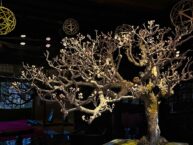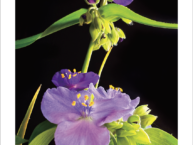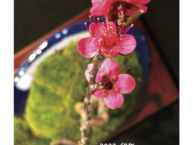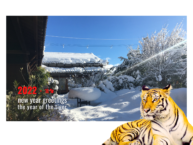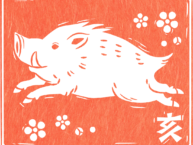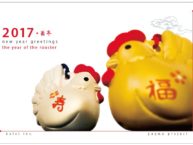Created by Tetsuya Kishida
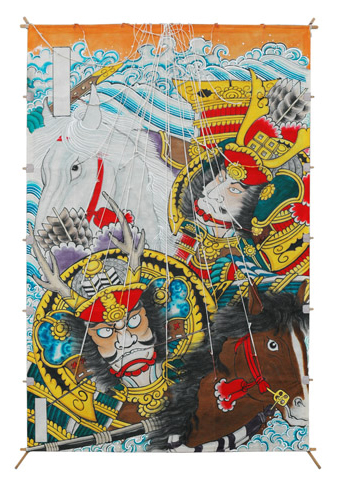
Samurai — whether famed historical figures or cast members of legends or fictional tales — feature prominently in traditional ukiyo-e prints. Here, we see a battle scene of two valiant samurai on horseback dynamically recreated in ukiyo-e style.
Edo kites are said to have started in Edo Period (1603 – 1868) in Tokyo when ukiyo-e was at its prime. They feature stunning graphic designs of amazingly dynamic impact, in themes typically having to do with stalwart warriors or symbols of good luck.
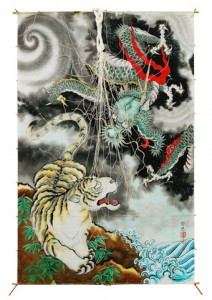
In Oriental art, the dragon and tiger are often used to depict two rivals of equally daunting capability. In this stunning hand-painted kite, these adversaries come to vivid life, doing battle against a dramatic backdrop.
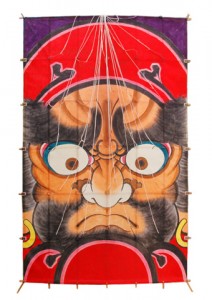
The spine-tingling face depicted on this hand-painted kite is that of Bodhidharma, founder of Zen Buddhism. Daruma symbolizes strong effort and patience of the kind necessary to bring wishes to fruition.
There are other regions, such as Niigata, Aomori, Aichi, in Japan famous for their kites that have special features to the region, but Edo kites have a unique structural characteristic of making “howling” sound when flown which other kites do not have. You need to fly the kite to find out!
All of the Edo kites illustrated here are hand painted onto a Japanese paper or washi by a veteran kitemaker, Tetsuya Kishida and constructed by himself. His policy is to create Edo kites that are graphically stunning and that it should fly high in elegance.
Notice (updated 2019):
We are deeply saddened to announce the passing of Tetsuya Kishida.
His love and passion for creating and flying the Edo kites were unmeasurable. We were inspired by his artwork and our gratitude for the opportunity to work with him. RIP.

